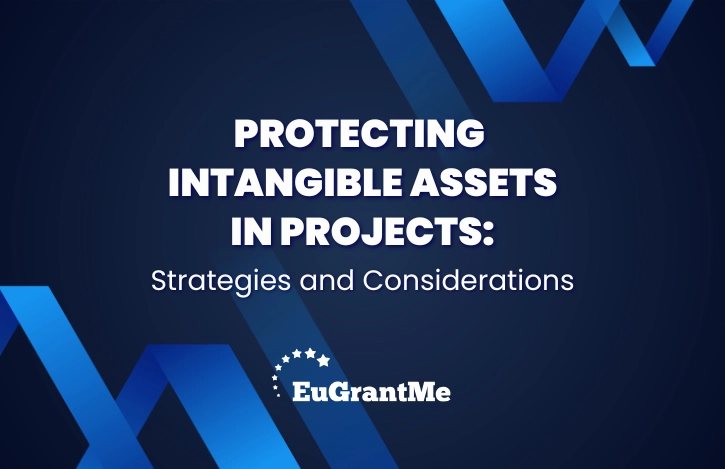In today’s knowledge-driven economy, protecting intangible assets is essential for businesses and projects. Intellectual property, trade secrets, and brand identity hold significant value. Without proper protection, companies risk losing competitive advantages, revenue, and innovation potential.
Projects involving research, technology, or creative work require a strategic approach to asset protection. Legal frameworks, security measures, and contractual safeguards play a vital role. Understanding these aspects ensures long-term sustainability and growth.
Understanding Intangible Assets
Intangible assets differ from physical assets. They include intellectual property, proprietary knowledge, and brand recognition. These elements define a company’s unique value and competitive strength.
Copyrights, trademarks, patents, and trade secrets fall under legal protection. However, protecting intangible assets requires more than just formal registration. Businesses must integrate legal, technical, and operational safeguards.
Unprotected intangible assets face risks such as unauthorised use, data breaches, and unfair competition. Identifying key assets early in a project allows for proactive protection.
Legal Protection Strategies
Legal frameworks provide strong protection for intangible assets. Companies must choose the right mechanisms based on their specific needs.
Patents safeguard inventions, offering exclusive rights for a fixed period. Copyright protects original works, including software, designs, and written content. Trademarks prevent unauthorised use of brand elements, such as logos and slogans.
Trade secrets rely on confidentiality. Businesses must implement strong non-disclosure agreements (NDAs) and access restrictions. A well-structured legal strategy reduces risks and ensures enforceability in disputes.
Contractual Safeguards in Projects
Projects often involve multiple stakeholders, including partners, suppliers, and employees. Clear contracts define ownership, responsibilities, and confidentiality obligations.
Intellectual property clauses ensure that rights remain with the rightful owner. Licensing agreements specify how third parties may use protected assets. NDAs prevent unauthorised disclosure of sensitive information.
Comprehensive contracts minimise conflicts and strengthen intangible asset protection. Businesses should review agreements regularly to adapt to evolving risks.
Cybersecurity Measures for Digital Assets
Many intangible assets exist in digital form. Cybersecurity plays a critical role in preventing data breaches and intellectual property theft.
Strong encryption methods protect sensitive files. Access controls ensure that only authorised personnel handle valuable information. Regular security audits identify vulnerabilities before they become threats.
Cloud storage and remote work introduce additional risks. Businesses must use secure communication channels and monitor data access. A robust cybersecurity strategy prevents digital exploitation.
Managing Internal Risks
Employees and collaborators handle critical information daily. Internal risks arise when individuals misuse or accidentally expose intangible assets.
Training programmes raise awareness of intellectual property rights and security protocols. Clear policies define how employees should handle confidential data. Exit agreements prevent departing staff from misusing proprietary knowledge.
Regular audits help identify potential risks early. By fostering a culture of awareness, companies strengthen asset protection from within.
Safeguarding Brand Identity
Brand reputation contributes significantly to business success. Unauthorised use or imitation can harm credibility and customer trust.
Trademark registration prevents competitors from misusing logos or names. Online monitoring tools detect unauthorised use across digital platforms. Consistent branding reinforces recognition and distinguishes a company from competitors.
Legal action may be necessary in cases of brand infringement. Strong brand protection strategies maintain business reputation and market positioning.
Protecting Intellectual Property in Collaborations
Many projects involve partnerships with research institutions, startups, or industry leaders. Collaboration brings innovation but also risks.
Joint ownership agreements clarify intellectual property rights. Defined roles and responsibilities prevent disputes over asset control. Secure communication channels protect sensitive discussions.
Balancing collaboration with asset protection ensures that all parties benefit while maintaining security. Careful planning strengthens partnerships without compromising valuable assets.
International Considerations for Asset Protection
Global projects require strategies that account for jurisdictional differences. Intellectual property laws vary across regions, affecting protection measures.
Companies expanding internationally must register patents and trademarks in relevant markets. Compliance with local regulations prevents legal challenges. Strong contractual agreements ensure protection across borders.
Monitoring international markets for potential infringements safeguards business interests. A proactive approach strengthens global intangible asset security.
The Role of Technology in Asset Protection
Emerging technologies offer new ways to protect intangible assets. Blockchain, artificial intelligence, and digital rights management enhance security.
Blockchain ensures transparent ownership records for intellectual property. AI detects potential threats, such as unauthorised content use. Digital rights management controls access to copyrighted materials.
Integrating these technologies into asset protection strategies enhances efficiency and security. Innovation in security measures keeps businesses ahead of evolving threats.
Balancing Accessibility and Security
Protecting intangible assets should not restrict business growth. Companies must find a balance between security and accessibility.
Collaboration, marketing, and customer engagement require controlled asset exposure. Secure sharing platforms enable information exchange while preventing misuse.
Businesses should assess risks before making assets publicly available. Strategic planning ensures security without limiting opportunities.
Long-Term Strategies for Sustainable Protection
Asset protection is an ongoing process. Businesses must continuously adapt to new risks and evolving legal landscapes.
Regular policy updates reflect changing regulations and business needs. Periodic security assessments identify potential weaknesses. Investments in legal expertise ensure compliance and enforceability.
A proactive and evolving approach keeps intangible assets secure over time. Sustainable strategies strengthen business resilience and competitive advantage.
***
Protecting intangible assets is essential for long-term business success. Legal safeguards, cybersecurity measures, and strategic planning reduce risks and enhance security. Businesses that prioritise protection strengthen innovation, market position, and financial stability.
At EuGrantMe, we are passionate about fostering innovation and empowering ambitious minds to flourish. Our mission revolves around providing top-notch grant writing services for the EIC Accelerator and Horizon grants in Europe. We enable our customers to unlock the full potential of their ground-breaking ideas.
Do you have a project to turn into reality?
Contact us!


